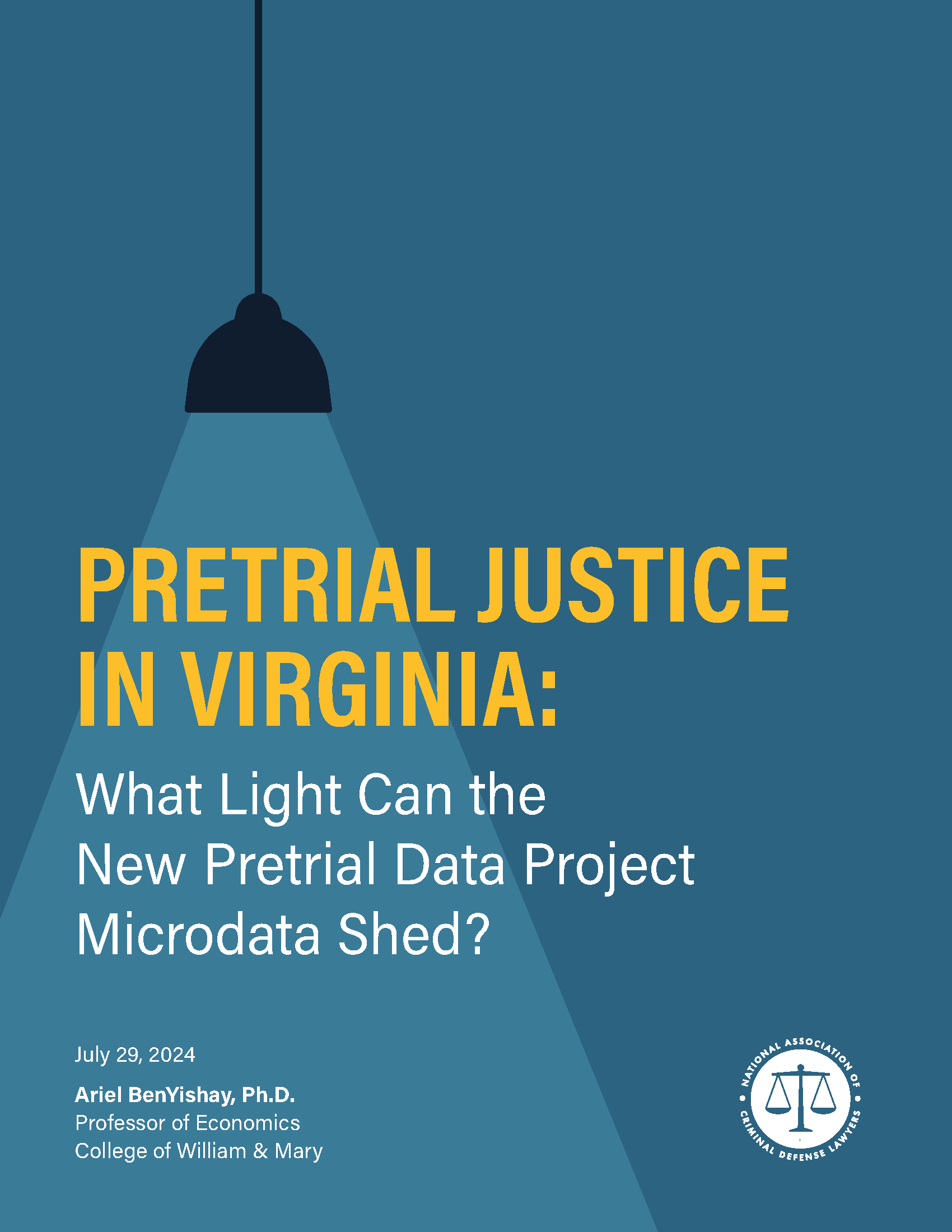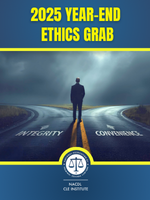Documents
 This report uses data from the Virginia Pretrial Data Project to assess Virginia’s pretrial system. For more resources relevant to this issue, visit our landing page here.
This report uses data from the Virginia Pretrial Data Project to assess Virginia’s pretrial system. For more resources relevant to this issue, visit our landing page here.
Executive Summary
-
Until recently, the effectiveness of Virginia’s pretrial system in achieving its goals of public safety, protection of individual freedoms, and efficient and just court proceedings has been hard to ascertain, due in part to the lack of available systematic data.
-
New data released as part of the Virginia Pretrial Data Project (PDP) now provide opportunities to more closely examine the pretrial system in much richer detail and with more rigorous statistical methods than have previously been available.
-
We examine the recently released PDP data reflecting the pretrial experiences of more than 350,000 individuals who committed an offense in 2018. These data include a large suite of variables relating to key aspects of the defendants’ initial charges, pretrial detention and release, any new arrests during the pretrial period, and case outcomes.
-
This report examines three important areas that have been the focus of recent debate: (i) reducing charge severity from felonies to misdemeanors, (ii) eliminating presumptions against bail, and (iii) identifying racial disparities throughout the pretrial system.
-
In the first section, we study the impact that charging someone with a misdemeanor rather than a felony has on the person’s pretrial release and case outcomes, as well as on public safety. We find that the 2018 legislation in Virginia that raised the threshold for when certain larcenies are charged as misdemeanors rather than felonies shortened the length of time a person was detained and increased the likelihood they would be assigned an unsecured rather than secured bond.
-
The reduction in charge type also substantially altered case outcomes. Being charged with a misdemeanor causes a person to be much less likely to be convicted of any charge associated with their original arrest, and reduced the likelihood they would be sentenced to 12 months or more of incarceration. In other words, even for an arrest for the same criminal act, the class of charge brought against a defendant dramatically affects whether the person will actually be convicted and imprisoned.
-
Finally, we observe no offsetting encouragement of new larcenies after the reform, either in the PDP data or in the Uniform Crime Reporting data.
-
In our second section, we examine the use of presumptions against bail using the first PDP release reflecting individuals charged with an offense in October 2017.
-
Our analysis finds that at least 9.5% of defendants statewide were subject to presumptions against bail in the 2017 sample, with many others potentially subject to them.
-
Unsurprisingly, the data shows these defendants were much less likely to be released pretrial (50%, compared to 83% among other defendants), and when released, they frequently faced more onerous release conditions (even when compared to people charged with similar crimes that did not trigger presumptions).
-
However, this lower release rate for those subject to presumptions against bail was not selectively of defendants at “higher risk” of arrest for new criminal activity. Many of the individuals who fell within the presumptions against bail also had the lowest risk assessment ratings (based in large part on their minimal criminal records). Despite their low risk, these individuals were detained at higher rates when subject to presumptions.
-
To further assess whether presumptions improved public safety, we compare the rearrest rates for defendants subject to presumptions who were released pretrial to those of defendants not subject to presumptions who were also released. Fewer than 5% of defendants who faced presumptions but were released were charged with a new violent offense in the pretrial period, nearly identical to the share among defendants who did not face presumptions.
-
Why do we find this? The charge a defendant faces is a very weak predictor of the likelihood they will be arrested for a new crime. Because the presumptions were largely based on the charge the defendant faces, they also proved to be a very weak predictor of subsequent criminal activity. As such, they are not useful as tools to distinguish high- and low-risk release (i.e., to identify defendants with high risk of new criminal activity).
-
The presence of presumptions (prior to 2021) likely cost at least $65M in additional jail operating costs and created significant unmeasured burdens on defendants, their families, and communities, without improving public safety.
-
Finally, in our third section, we examine the extent to which defendants of different races experience different pretrial conditions using the PDP for all defendants charged in 2018.
-
African-Americans comprise nearly 40% of the defendants charged with an offense punishable by incarceration in 2018, double their share of the overall population (20%).
-
African-Americans are much more likely to be held without bail by a magistrate than defendants of other races, and much less likely to be assigned an unsecured bond (which does not require cash or upfront payment).
-
These disparities are not simply due to differences in the types of offenses with which African-Americans are charged relative to others, to different conditions in localities with higher African-American populations, or other demographic factors.
-
The largest factor explaining these disparities appears to be the difference in the criminal history records of African-Americans relative to other defendants, which could itself reflect prior disparities experienced by African-Americans. However, even this factor does not eliminate the disparities exhibited in most of the pretrial release conditions we examine.













